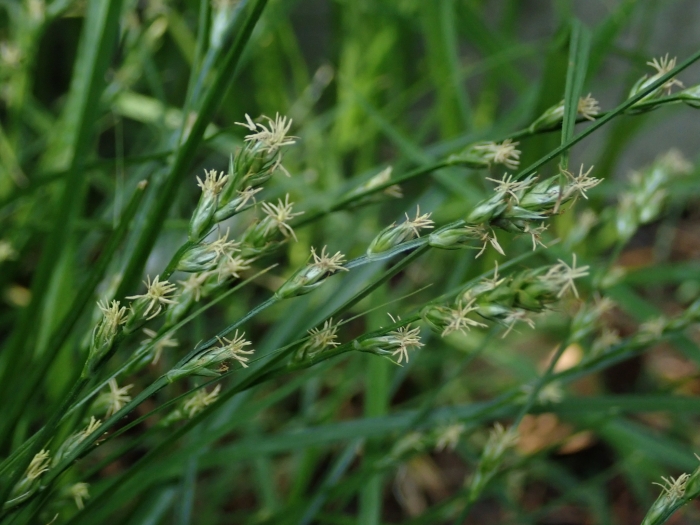Grey Sedge
(Carex divulsa)
Grey Sedge (Carex divulsa)
/
/

Daniel Cahen
CC BY 4.0
Image By:
Daniel Cahen
Recorded By:
Copyright:
CC BY 4.0
Copyright Notice:
Photo by: Daniel Cahen | License Type: CC BY 4.0 | License URL: http://creativecommons.org/licenses/by/4.0/ | Rights Holder: Daniel Cahen | Publisher: iNaturalist | Date Created: 2020-05-08T16:31:37-07:00 |






















Estimated Native Range
Summary
Carex divulsa, commonly known as Grey Sedge, is a perennial herbaceous plant native to a wide range of habitats including meadows, open woodlands, and grassy slopes in Macaronesia, Europe, northwest Africa, the Caucasus, and the Middle East. It has been introduced to other regions such as northeast Argentina and various parts of the United States, where it often occupies moist to wet areas. Grey Sedge typically grows to a height of 12-24 inches (30-60 cm) and forms dense, tufted clumps with narrow, arching, green to glaucous leaves. The inconspicuous greenish-brown flowers appear in spring and are followed by small, brown seed capsules.
Grey Sedge is valued for its ability to form a dense ground cover, which makes it effective for erosion control and for use in rain gardens or along stream banks. It is also used in landscaping for its texture and adaptability to various soil conditions. This sedge prefers partial to full sun exposure and can tolerate a range of soil types, from clay to sandy loams, provided they are well-drained. It is generally low maintenance but can spread if not managed, potentially becoming invasive in some areas. Grey Sedge is also used in habitat restoration projects and as a lawn alternative in low-traffic areas.CC BY-SA 4.0
Grey Sedge is valued for its ability to form a dense ground cover, which makes it effective for erosion control and for use in rain gardens or along stream banks. It is also used in landscaping for its texture and adaptability to various soil conditions. This sedge prefers partial to full sun exposure and can tolerate a range of soil types, from clay to sandy loams, provided they are well-drained. It is generally low maintenance but can spread if not managed, potentially becoming invasive in some areas. Grey Sedge is also used in habitat restoration projects and as a lawn alternative in low-traffic areas.CC BY-SA 4.0
Plant Description
- Plant Type: Grass
- Height: 1-3 feet
- Width: 1-3 feet
- Growth Rate: Moderate
- Flower Color: N/A
- Flowering Season: Spring, Summer
- Leaf Retention: Evergreen
Growth Requirements
- Sun: Full Sun, Part Shade, Full Shade
- Water: Medium
- Drainage: Fast, Medium, Slow
Common Uses
Border Plant, Deer Resistant, Erosion Control, Groundcover, Low Maintenance, Rabbit Resistant, Street Planting
Natural Habitat
Native to meadows, open woodlands, and grassy slopes
Other Names
Common Names: Berkeley Sedge , Grassland Sedge
Scientific Names: Carex divulsa , Carex canescens , Carex divulsa , Carex divulsa f. angustifolia , Carex divulsa f. guestphalica , Carex divulsa f. misera , Carex divulsa f. polycarpa , Carex divulsa subsp. virens , Carex divulsa var. approximata , Carex divulsa var. approximata
GBIF Accepted Name: